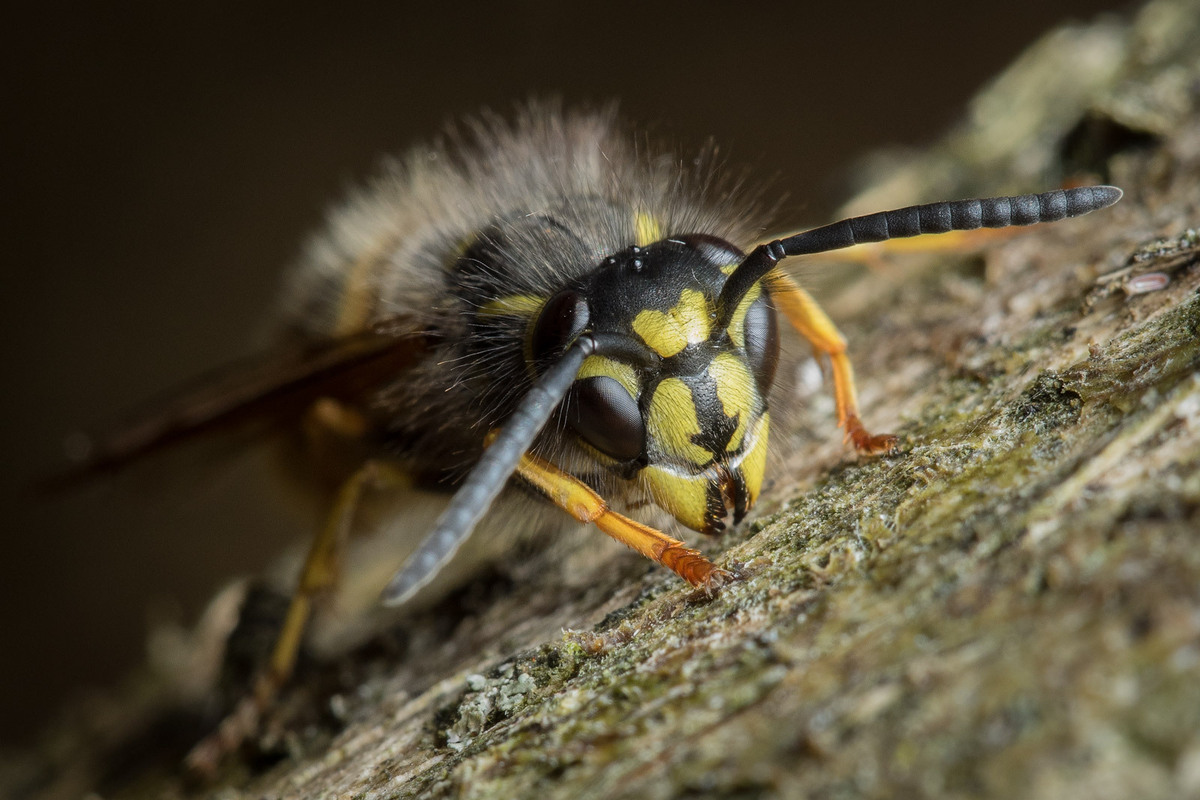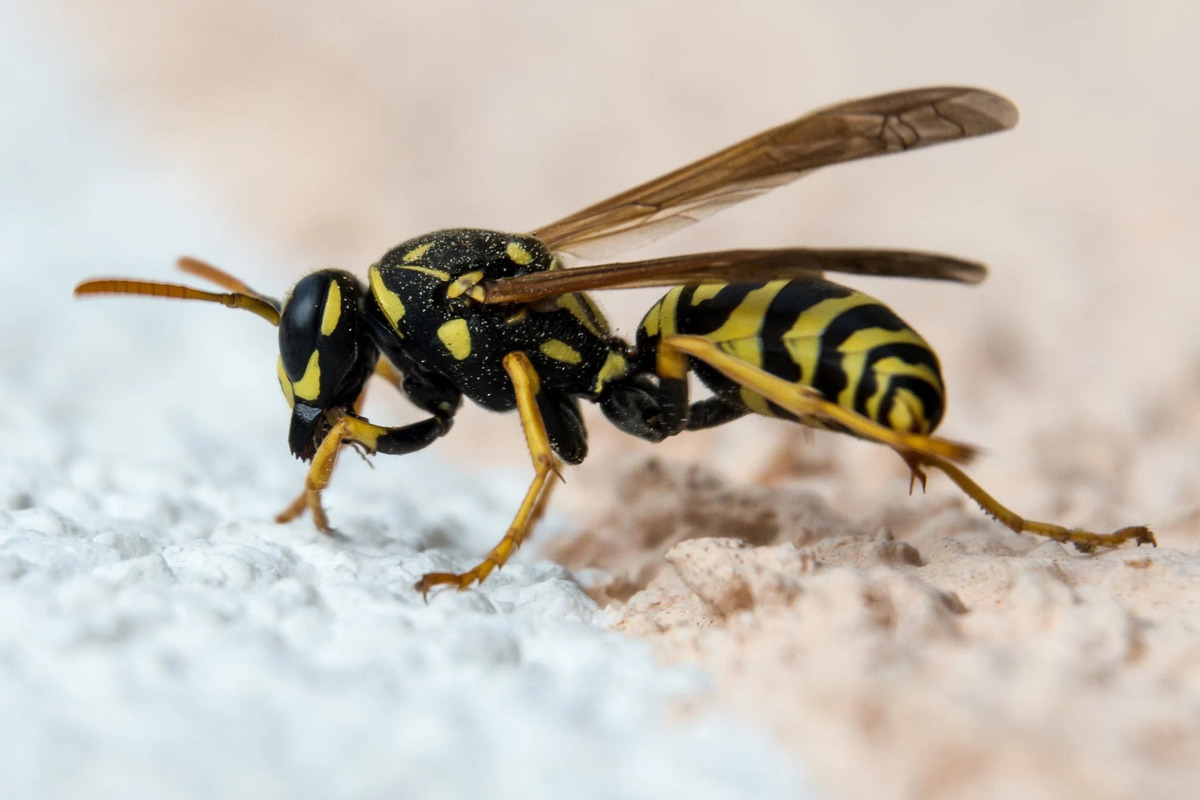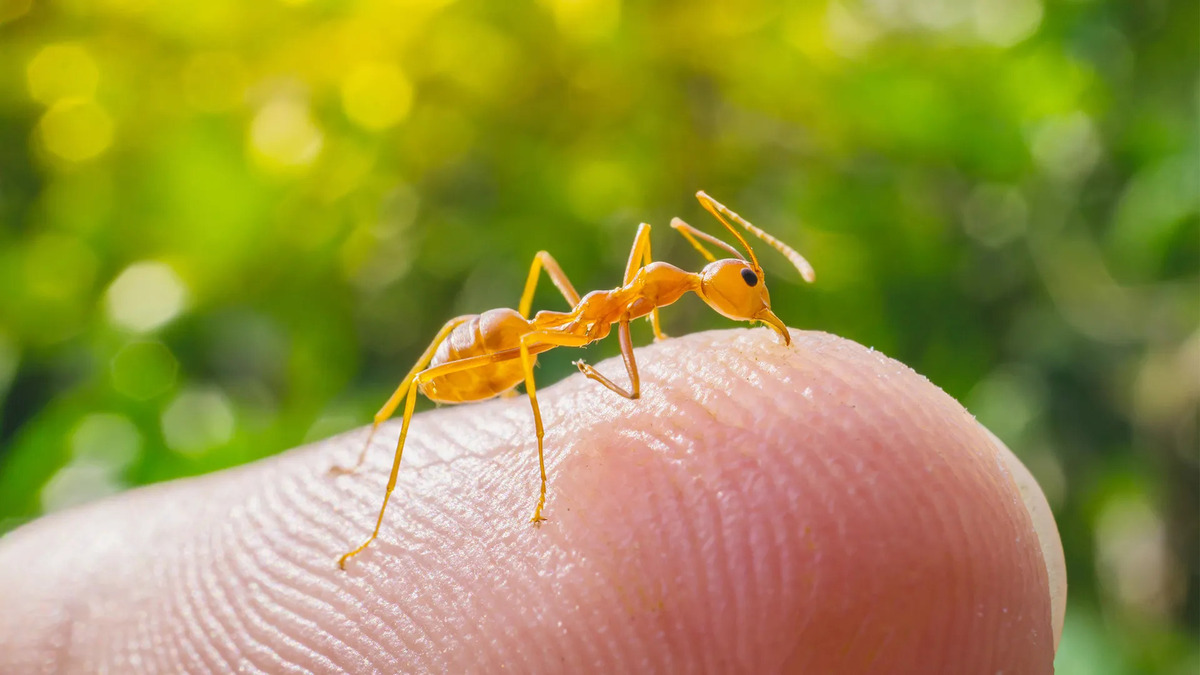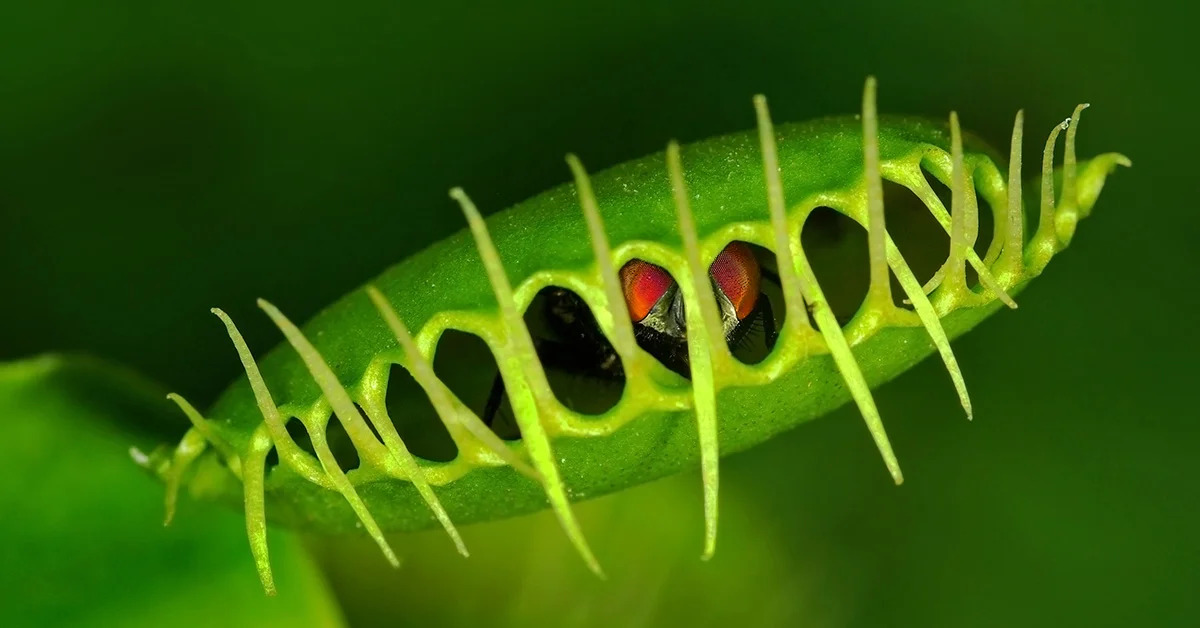Home>Gardening News and Trends>Latest News>Why Do Insects Have Antennae


Latest News
Why Do Insects Have Antennae
Published: December 9, 2023
Discover the fascinating reason behind why insects have antennae in our latest news. Uncover the importance of this unique feature in their sensory communication.
(Many of the links in this article redirect to a specific reviewed product. Your purchase of these products through affiliate links helps to generate commission for Chicagolandgardening.com, at no extra cost. Learn more)
Table of Contents
Introduction
Insects, with their diverse shapes, colors, and behaviors, have captivated humans for centuries. From the industrious honeybee to the delicate butterfly, these tiny creatures have found their place in our ecosystems and in our hearts. One distinctive feature that sets insects apart from other creatures is their antennae.
The purpose of this article is to explore the fascinating world of insect antennae, uncovering their structure, function, sensory capabilities, and their importance for the survival of these remarkable creatures. By delving into the evolutionary origins and diversity of insect antennae, we can gain a deeper appreciation for the remarkable adaptations that have allowed insects to thrive in various environments.
While we often associate antennae with their iconic appearance in insects, their role goes far beyond aesthetics. Antennae play a vital role in navigating the world around insects, helping them find food, communicate with others, and detect potential dangers. Through their sophisticated sensory capabilities, insect antennae provide crucial information that is essential for their survival.
Join us on this journey of exploration as we unravel the mysteries of insect antennae and gain a greater understanding of these remarkable appendages. Let’s dive into the intricate world of insect antennae and discover the wonders that lie beneath their seemingly simple exterior.
Purpose of Insect Antennae
Have you ever wondered why insects have antennae? These slender, antenna-like projections protruding from their heads serve several important purposes that are essential for their survival and success in the natural world.
First and foremost, insect antennae are sensory organs that allow insects to perceive and interpret their environment. They are equipped with various types of sensory receptors, such as chemoreceptors, mechanoreceptors, and thermoreceptors, which enable insects to detect and respond to different stimuli.
One of the primary functions of insect antennae is to detect chemical signals in the environment. Through specialized chemoreceptors, insects can sense pheromones released by others of their species, helping them locate mates for reproduction. In addition to pheromones, insect antennae can also detect chemical cues related to food sources, predators, and potential threats.
Furthermore, insect antennae play a crucial role in perception of mechanical stimuli. They can detect vibrations in the air or on surfaces, allowing insects to navigate their surroundings and avoid potential obstacles. For instance, some ants use their antennae to follow scent trails left by other ants, ensuring efficient foraging and colony organization.
Another important function of insect antennae is thermoreception. Insects, being ectothermic organisms, rely on external sources of heat to regulate their body temperature. Antennae equipped with thermoreceptors enable insects to detect temperature gradients in the environment, helping them locate warm areas to bask or cool areas to seek refuge.
Beyond sensory perception, insect antennae also serve as vital organs for communication. Insects utilize intricate antennal movements and vibrations to communicate with one another. By picking up on specific antennal signals, insects can convey information about their intentions, presence, and readiness to interact. This form of communication is essential for cooperative behaviors, territoriality, and mate selection.
Overall, the purpose of insect antennae can be summarized as follows: to perceive and interpret the environment through chemical, mechanical, and thermal stimuli, and to facilitate communication with other members of their species.
Now that we have explored the purpose of insect antennae, let us delve deeper into their structure and function to gain a better understanding of these remarkable appendages.
Structure and Function of Insect Antennae
Insect antennae come in a wide variety of shapes and sizes, reflecting the diverse array of species and their specific ecological needs. Despite their variations, all antennae share a similar basic structure and perform essential functions for insects’ survival and behavior.
The antennae are composed of several segments, typically ranging from three to over 100, depending on the insect species. These segments are connected by flexible joints, allowing for movement and fine-tuning of sensory reception. The segments are covered with a thin cuticle, which protects the underlying sensory structures while also enabling the detection of external stimuli.
Each segment of the antenna contains sensory structures called sensilla, which are responsible for detecting different types of stimuli. These sensilla can vary in shape, size, and distribution, depending on the insect’s ecological niche and sensory requirements.
Chemoreceptors, specializing in the detection of chemical signals, are present in most insect antennae. These receptors can detect a broad range of odorous molecules, including pheromones, plant volatiles, and other chemical cues. The chemoreceptors are housed within sensilla called sensilla trichodea or sensilla basiconica, which are located along the surface of the antennae.
Mechanoreceptors, responsible for sensing mechanical stimuli, are another important component of insect antennae. These receptors allow insects to perceive vibrations in the air or on surfaces, providing information about the environment and potential dangers. Mechanoreceptors are usually found in sensilla called sensilla chaetica or sensilla campaniformia, which can be arranged in different patterns along the antenna.
Thermoreceptors, sensitive to temperature gradients, are also present in certain insect antennae. These receptors enable insects to monitor the ambient temperature and locate areas that are conducive to their metabolic needs. Thermoreceptors are often found in sensilla called sensilla coeloconica or sensilla placodea, which are specialized for thermal perception.
The structure and distribution of sensilla on the antennae are not uniform across all insect species. Instead, they are shaped by the ecological niche and specific sensory requirements of each insect. For example, mosquitoes have highly elongated antennae with long, thin sensilla to detect subtle changes in carbon dioxide levels—an important cue for locating hosts for blood-feeding.
In addition to their sensory function, insect antennae also play a role in locomotion and navigation. By monitoring the movements and position of their antennae, insects can navigate through complex environments, avoid obstacles, and maintain stability during flight.
Overall, the structure and function of insect antennae highlight their remarkable adaptability and versatility. These sensory organs allow insects to perceive their surroundings, communicate with others, and navigate their environment, ultimately contributing to their survival and success in various ecological niches.
Now that we have explored the structure and function of insect antennae, let us delve into the sensory capabilities that enable insects to interact with their environment in remarkable ways.
Sensory Capabilities of Insect Antennae
Insect antennae are remarkable sensory organs that enable insects to perceive and interpret their environment in ways that surpass human capabilities. These slender appendages are equipped with an array of sensory receptors, providing insects with a diverse range of sensory capabilities.
One of the primary sensory capabilities of insect antennae is chemoreception. Insects use chemoreceptors located on their antennae to detect and differentiate a wide array of chemical signals. These signals include pheromones, which are chemical substances used for communication between members of the same species. Pheromones play a crucial role in reproduction, territory marking, and social organization among insects.
Antennae also play a vital role in foraging and locating food sources. Insects can detect chemical cues emitted by flowers, fruits, decaying organic matter, and other potential food sources. By utilizing their antennae’s chemoreceptors, insects can navigate and exploit their environment effectively.
In addition to chemoreception, insect antennae are highly sensitive to mechanical stimuli. Their mechanoreceptors are capable of detecting even the slightest vibrations in the air or on surfaces. This allows insects to perceive the movement of predators, locate potential mates, and navigate through their environment.
The sensitivity of insect antennae to vibrations extends to sound perception as well. Some insects, such as crickets and grasshoppers, have specialized auditory structures on their antennae. These structures, known as auditory sensilla, can detect and analyze specific sound frequencies. This enables insects to communicate with each other using complex acoustic signals and detect the presence of potential threats or predators.
Thermoreception is another sensory capability of insect antennae. Thermoreceptors located on the antennae allow insects to sense temperature gradients in their surroundings. This ability is particularly important for ectothermic insects that rely on external heat sources to regulate their body temperature. By using their antennae’s thermoreceptors, insects can locate areas with optimal temperatures for activities such as mating, basking, or seeking shelter.
Some insect species, such as mosquitoes and triatomine bugs, have specialized antennae capable of detecting specific host odors. These insects use their antennae to sense chemical cues emitted by potential hosts. For example, mosquitoes rely on the detection of carbon dioxide and certain volatile compounds to locate human hosts for blood-feeding. This demonstrates the incredible precision of insect antennae in detecting specific odors crucial for their survival.
In addition to their sensory capabilities, the structure and movement of insect antennae also play a role in social interactions. Insects can use their antennae to perform specific signals and gestures, such as touching or stroking other individuals during courtship or aggression displays. These antennal movements and touch interactions serve as an essential mode of communication and play a crucial role in maintaining social cohesion within insect communities.
The sensory capabilities of insect antennae are truly remarkable. Through chemoreception, mechanoreception, thermoreception, auditory perception, and host detection, insects utilize their antennae to explore, interact with, and survive in their environment. These sensory capabilities illustrate the incredible adaptability and complexity of these vital sensory organs.
Now that we have explored the sensory capabilities of insect antennae, let us uncover the importance of these appendages for the survival and evolutionary success of insects.
Importance of Insect Antennae for Survival
Insect antennae play a critical role in the survival and evolutionary success of insects. These specialized appendages provide insects with vital sensory information that is crucial for their everyday activities, interactions, and overall well-being.
One of the primary reasons for the importance of insect antennae is their role in locating essential resources, such as food and mates. Through their chemoreceptors, insects can detect chemicals emitted by potential food sources, helping them locate and acquire nutrients necessary for their survival. Antennae also play a crucial role in detecting pheromones, which are chemical signals used for communication and reproduction. By picking up on pheromonal cues, insects can find mates and ensure the continuity of their species.
Antennae are not only essential for finding resources but also for avoiding potential threats. The mechanoreceptors present on the antennae allow insects to detect vibrations in the air or on surfaces, alerting them to the presence of predators or other dangers. This early warning system enables insects to swiftly respond and take evasive action, increasing their chances of survival.
The sensory capabilities provided by insect antennae also contribute to their foraging efficiency. By detecting chemical cues emitted by specific plants or food sources, insects can navigate their environment more effectively, saving time and energy in the search for sustenance. This efficiency is particularly critical for insects with short lifespans or those that rely on ephemeral food sources.
Insect antennae also play a role in environmental sensing and adaptation. The thermoreceptors present on the antennae allow insects to detect temperature variations, aiding them in choosing optimal locations for activities such as basking or sheltering. By selecting favorable thermal conditions, insects can enhance their physiological functioning and overall fitness.
Furthermore, the sensory capabilities of insect antennae are instrumental in social interactions and communication. Insect antennae can detect specific chemical signals, such as pheromones and other semiochemicals, allowing individuals to communicate their intentions, reproductive status, or territorial boundaries. This communication is vital for establishing social hierarchies, coordinating collective behaviors, and avoiding unnecessary conflicts.
The importance of insect antennae is evident not only for individual insects but also for the well-being of entire ecosystems. Insects, as key components of various ecosystems, fulfill crucial roles as pollinators, decomposers, and prey for higher trophic levels. The sensory information obtained through their antennae allows them to perform these ecological functions effectively, maintaining the balance and biodiversity of their habitats.
In summary, the importance of insect antennae for survival cannot be overstated. These sensory organs enable insects to locate resources, avoid threats, forage efficiently, adapt to their environment, communicate with others, and fulfill ecological roles. The sensory information obtained through their antennae is vital for their everyday activities, contributing to their overall survival and evolutionary success.
Now that we have explored the importance of insect antennae, let us delve into the evolutionary origins of these remarkable sensory appendages.
Evolutionary Origins of Insect Antennae
The evolutionary origins of insect antennae are shrouded in mystery, with scientists still piecing together the fascinating story behind the development of these remarkable sensory appendages. While the exact origins may remain elusive, research suggests that insect antennae are likely derived from ancestral mouthparts.
Insects belong to the group of arthropods, which also includes crustaceans, spiders, and millipedes. Arthropods are characterized by their segmented bodies and jointed appendages. The evolutionary history of arthropods spans hundreds of millions of years, making it challenging to trace the precise origins of specific traits.
It is hypothesized that the ancestral insect mouthparts, which primarily served for feeding, underwent modifications over time, resulting in the evolution of antennae. These modifications may have involved changes in gene expression patterns or alterations in the developmental processes during embryonic development, leading to the transformation of specific mouthparts into sensory organs.
One theory suggests that the evolution of antennae as sensory appendages allowed insects to detect airborne chemical signals, such as pheromones. This ability would have conferred a significant advantage in finding mates, locating food sources, or avoiding predators. Selective pressures in the environment likely favored individuals with more sensitive antennae, leading to the refinement and diversification of these sensory structures throughout evolutionary history.
As insects diversified and adapted to varying ecological niches, the structure and function of antennae underwent further modifications. This divergence has resulted in the incredible diversity seen in modern-day insect antennae, with variations in length, shape, and sensory capabilities reflecting the specific needs and adaptations of different insect species.
Evolutionary studies have shown that the number of antennal segments and the presence of specific sensory structures can vary greatly among different insect groups. For example, butterflies and moths, which belong to the order Lepidoptera, have clubbed antennae consisting of fewer segments. In contrast, beetles, members of the order Coleoptera, typically have segmented antennae covered with sensilla that provide excellent chemoreceptive capabilities.
The evolutionary origins of insect antennae also highlight the concept of co-option, in which existing structures acquire new functions. In this case, ancestral mouthparts that were primarily involved in feeding and detecting food may have been co-opted to serve as sensory organs for chemical, mechanical, thermal, and auditory perception.
Unlocking the evolutionary origins of insect antennae is a complex puzzle that continues to be explored through comparative anatomy, genetics, and developmental biology. By studying the development of antennae in different insect species, scientists aim to gain insights into the genetic and cellular mechanisms that underlie their evolution.
The fascinating story of insect antennae evolution highlights the incredible adaptability and specialization of these sensory organs. They have allowed insects to thrive and diversify in countless ecological niches, shaping the insect world as we know it today.
Now that we have unraveled the evolutionary origins of insect antennae, let us reflect on the remarkable adaptations and significance of these sensory appendages in the insect kingdom.
Conclusion
Insect antennae are extraordinary sensory organs that have played a crucial role in the success and survival of insects throughout their evolutionary history. These slender appendages, derived from ancestral mouthparts, have undergone remarkable adaptations to become highly specialized sensory structures. Through chemoreception, mechanoreception, thermoreception, sound perception, and host detection capabilities, antennae allow insects to perceive and interpret their environment, communicate with others, and navigate their surroundings.
The purpose of insect antennae is multifaceted. They serve as vital tools for locating food sources, finding mates, detecting potential threats, and establishing social hierarchies. Antennae also play a fundamental role in environmental sensing and adaptation, enabling insects to respond to temperature gradients, recognize specific habitat cues, and fulfill important ecological roles within ecosystems.
The structure and function of insect antennae vary greatly across different species, reflecting the diverse adaptations that have arisen in response to specific ecological niches. From the elongated antennae of mosquitoes specialized for detecting human hosts to the clubbed antennae of butterflies and the segmented sensilla-covered antennae of beetles, each adaptation highlights the incredible diversity and adaptive potential of these sensory organs.
Understanding the evolutionary origins of insect antennae adds another layer of fascination to these remarkable structures. While their exact origins remain a subject of ongoing research, scientists hypothesize that they have evolved from ancestral mouthparts, co-opted and modified over time to serve as sensory appendages. Through genetic and developmental studies, scientists aim to unravel the intricate processes that have shaped the evolution of antennae throughout the vast diversity of insect species.
In conclusion, insect antennae are not just mere protuberances; they are sensory powerhouses that have enabled insects to thrive and conquer virtually every habitat on Earth. From the smallest crawling insect to the most elegant flying butterfly, these antennae allow insects to navigate their complex world, communicate effectively, and adapt to ever-changing environments. The study of insect antennae continues to reveal new insights into the fascinating adaptations and sensory capabilities of these creatures, offering a glimpse into the intricacies of the natural world.








